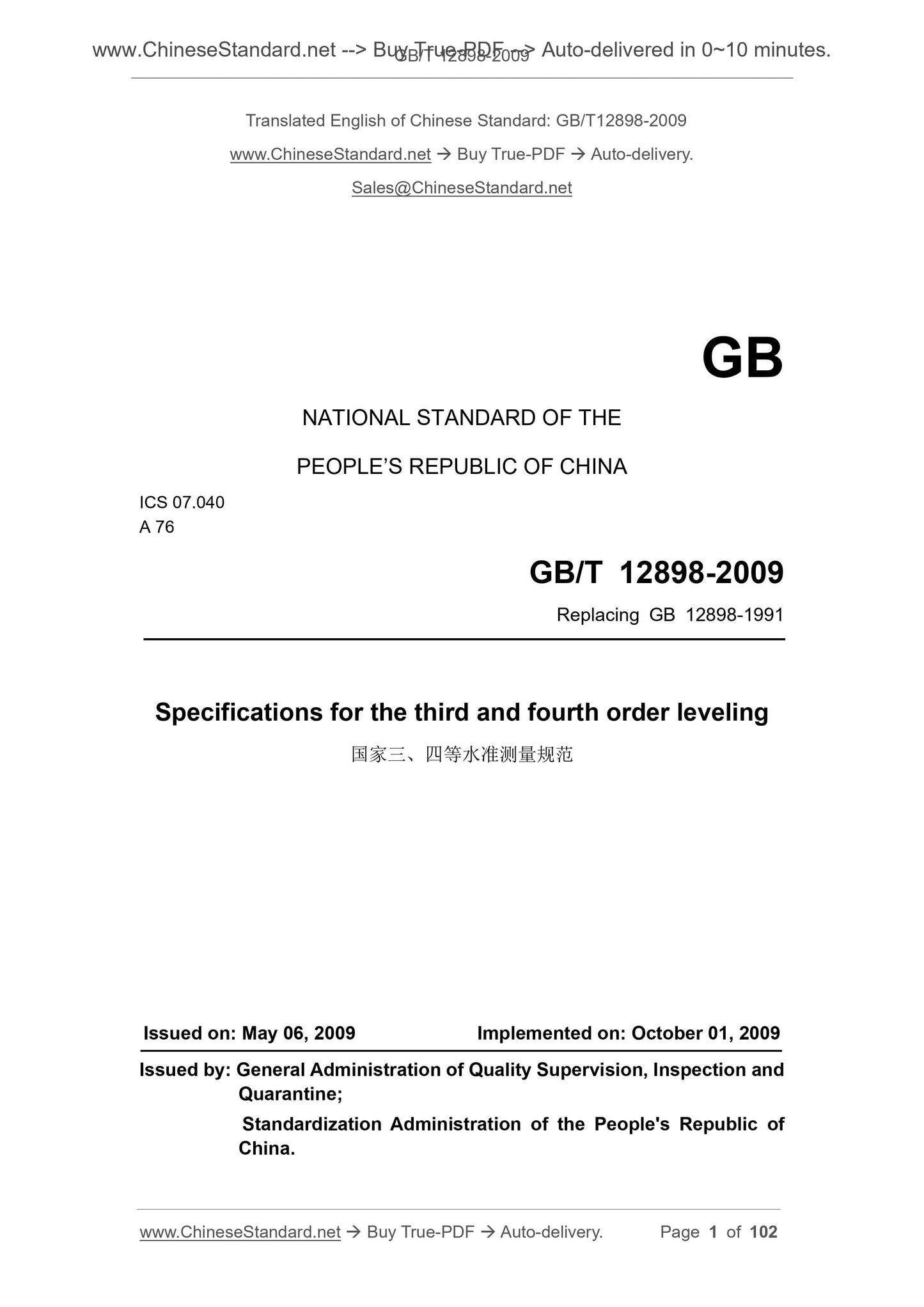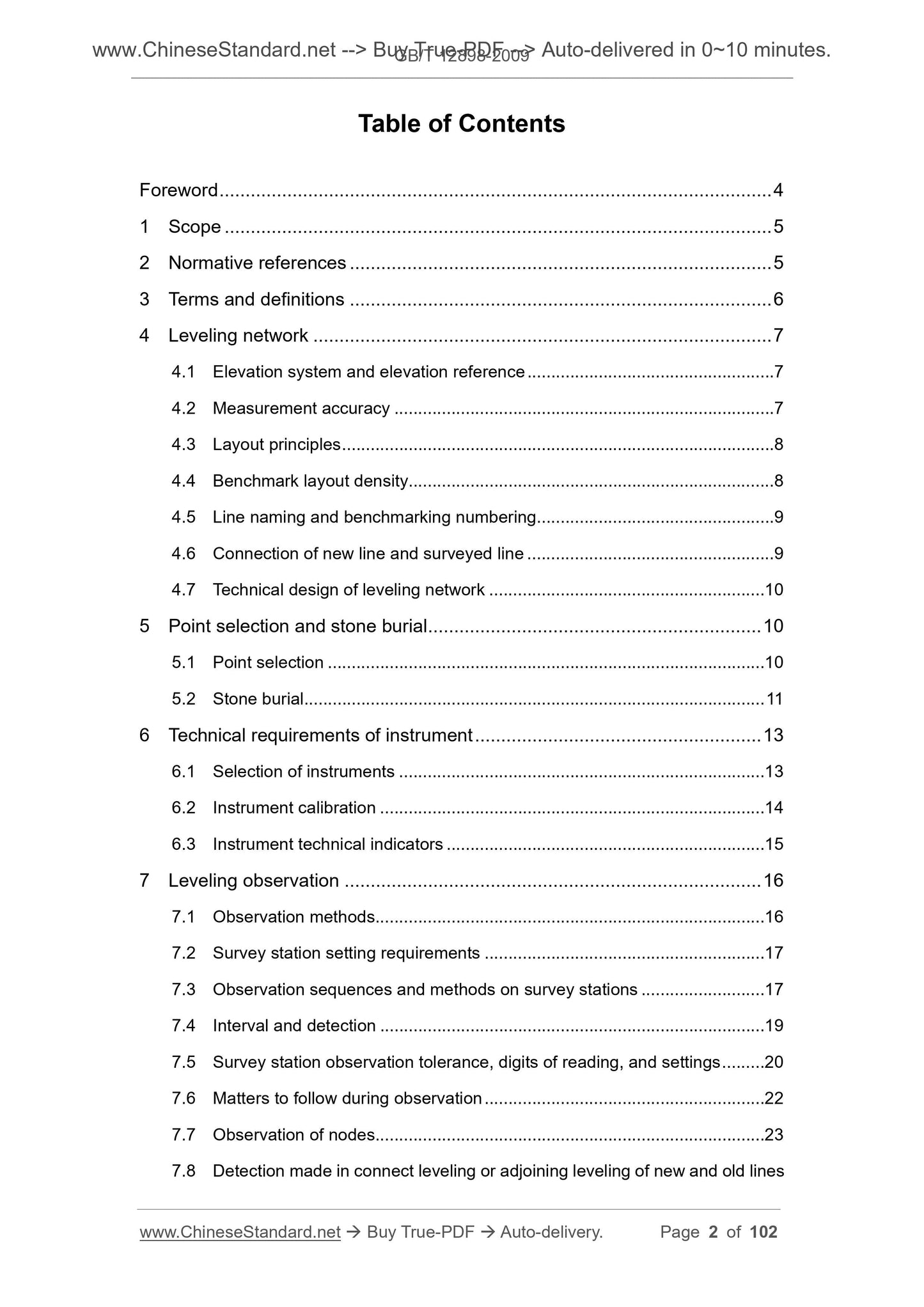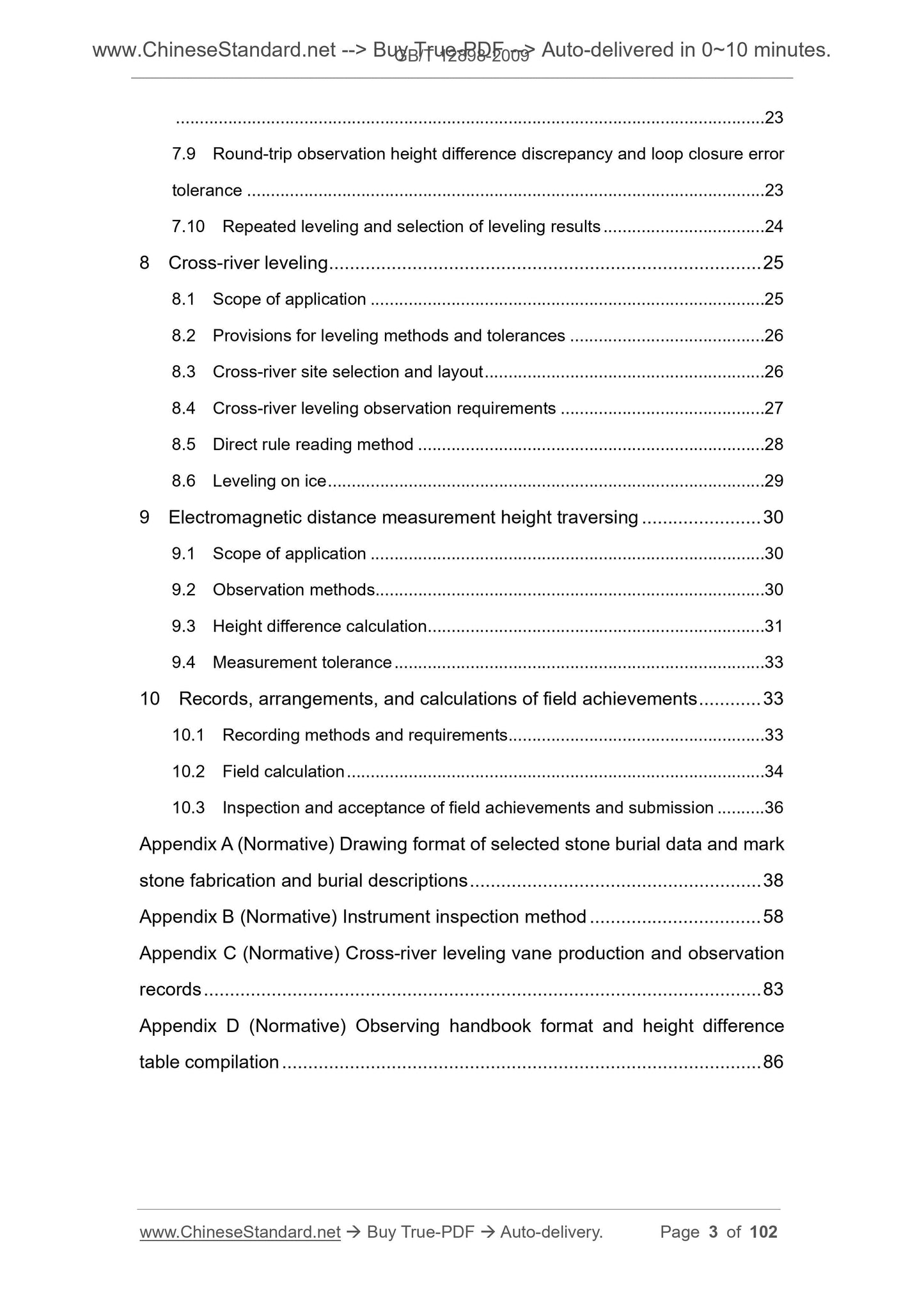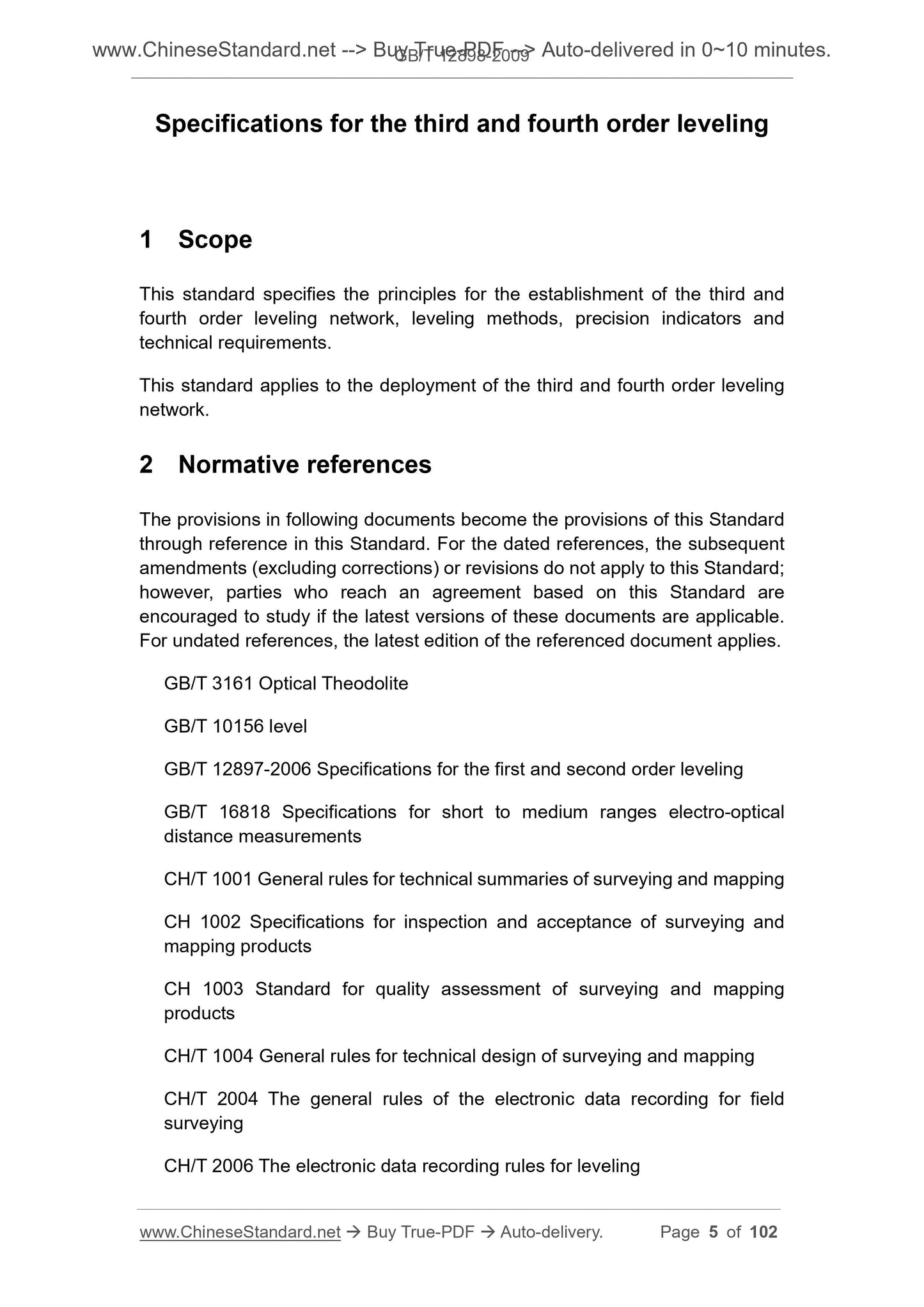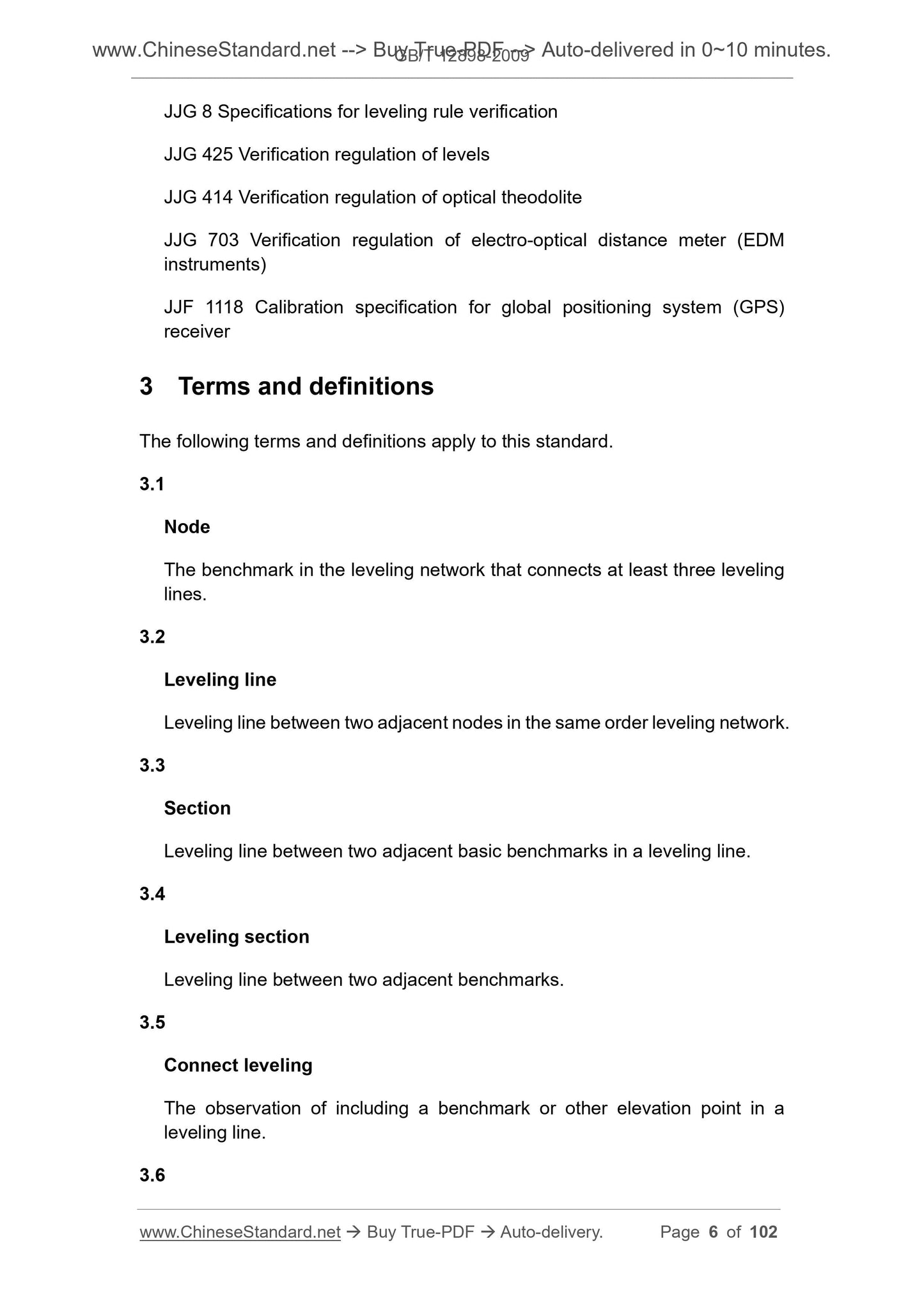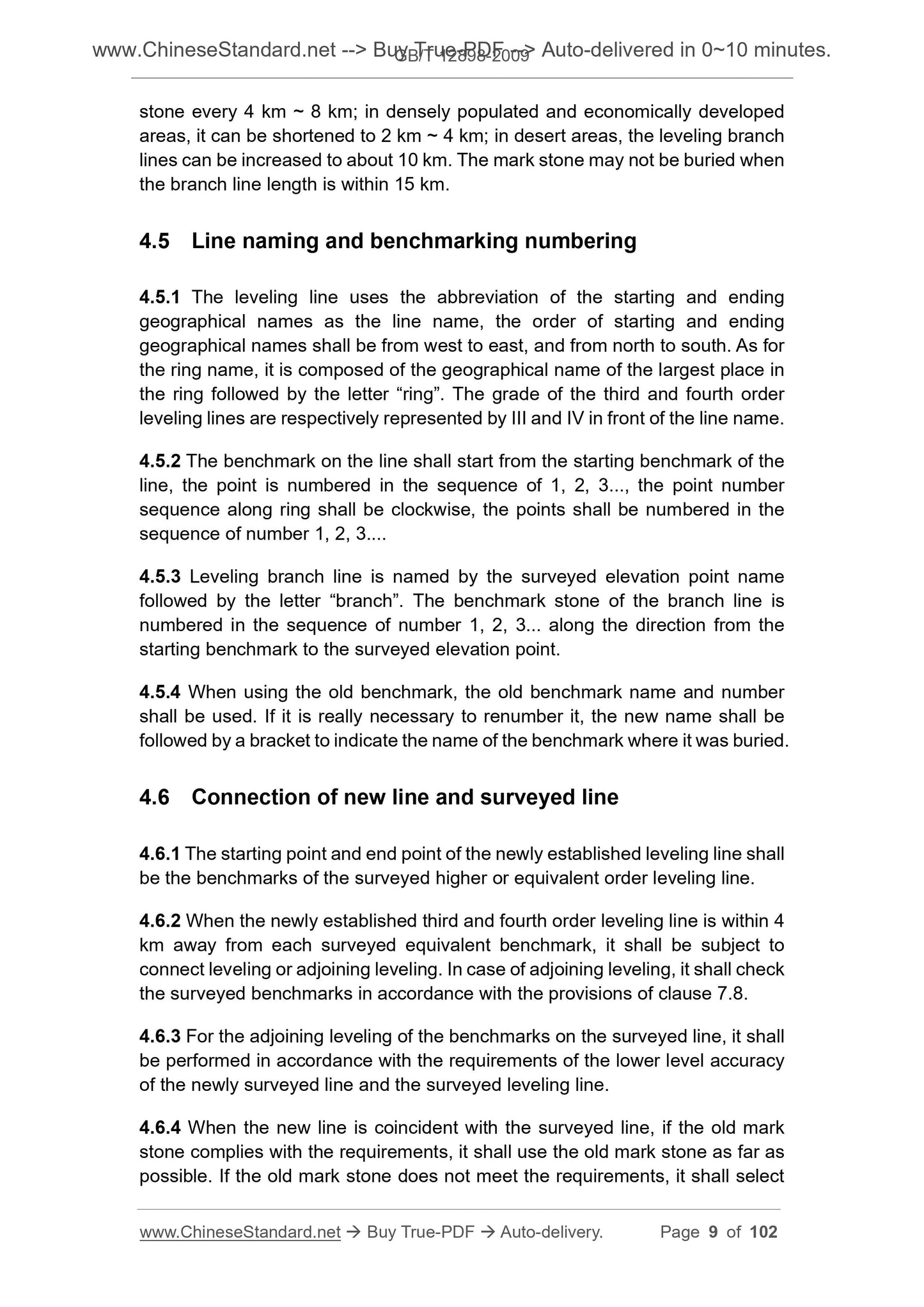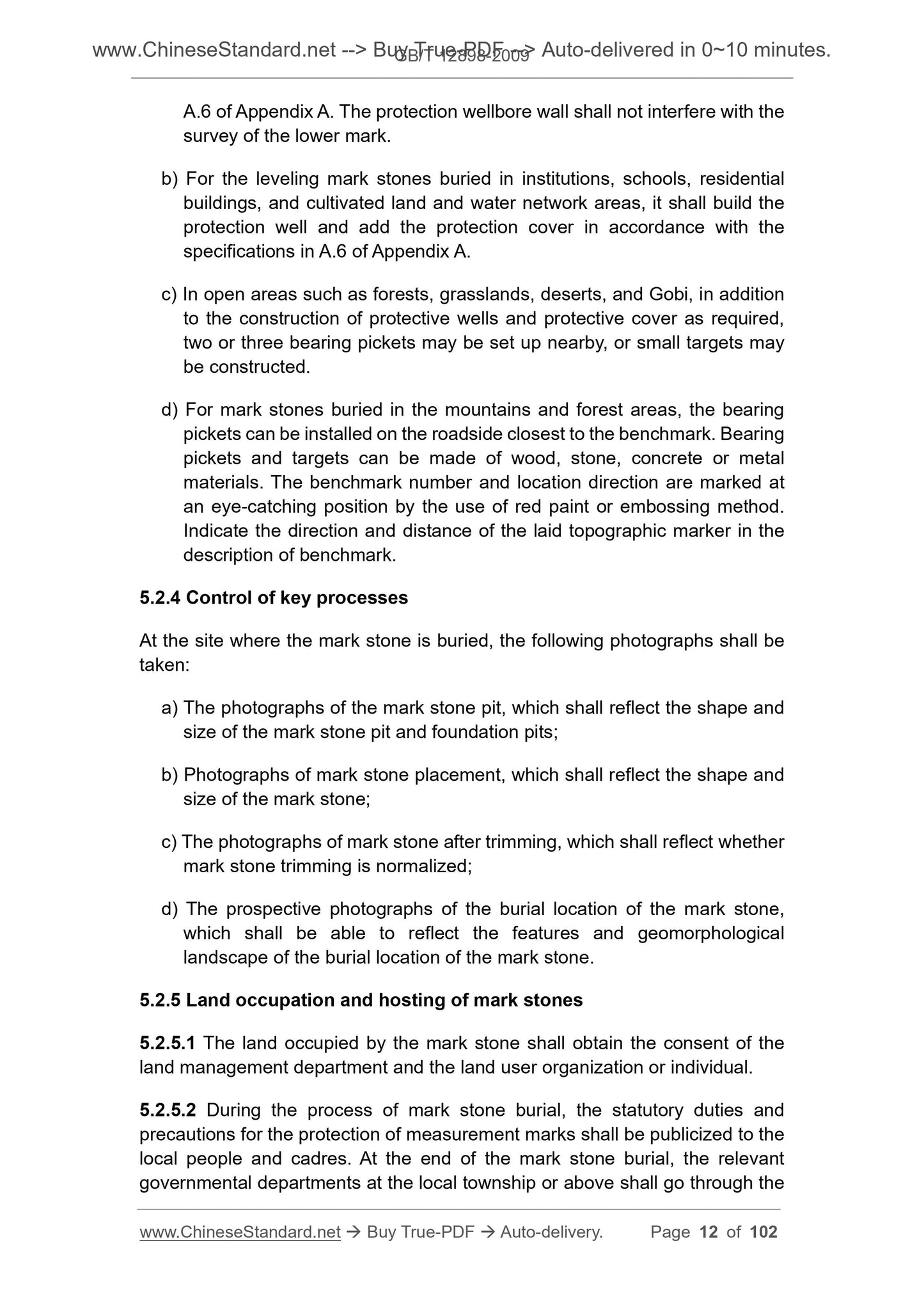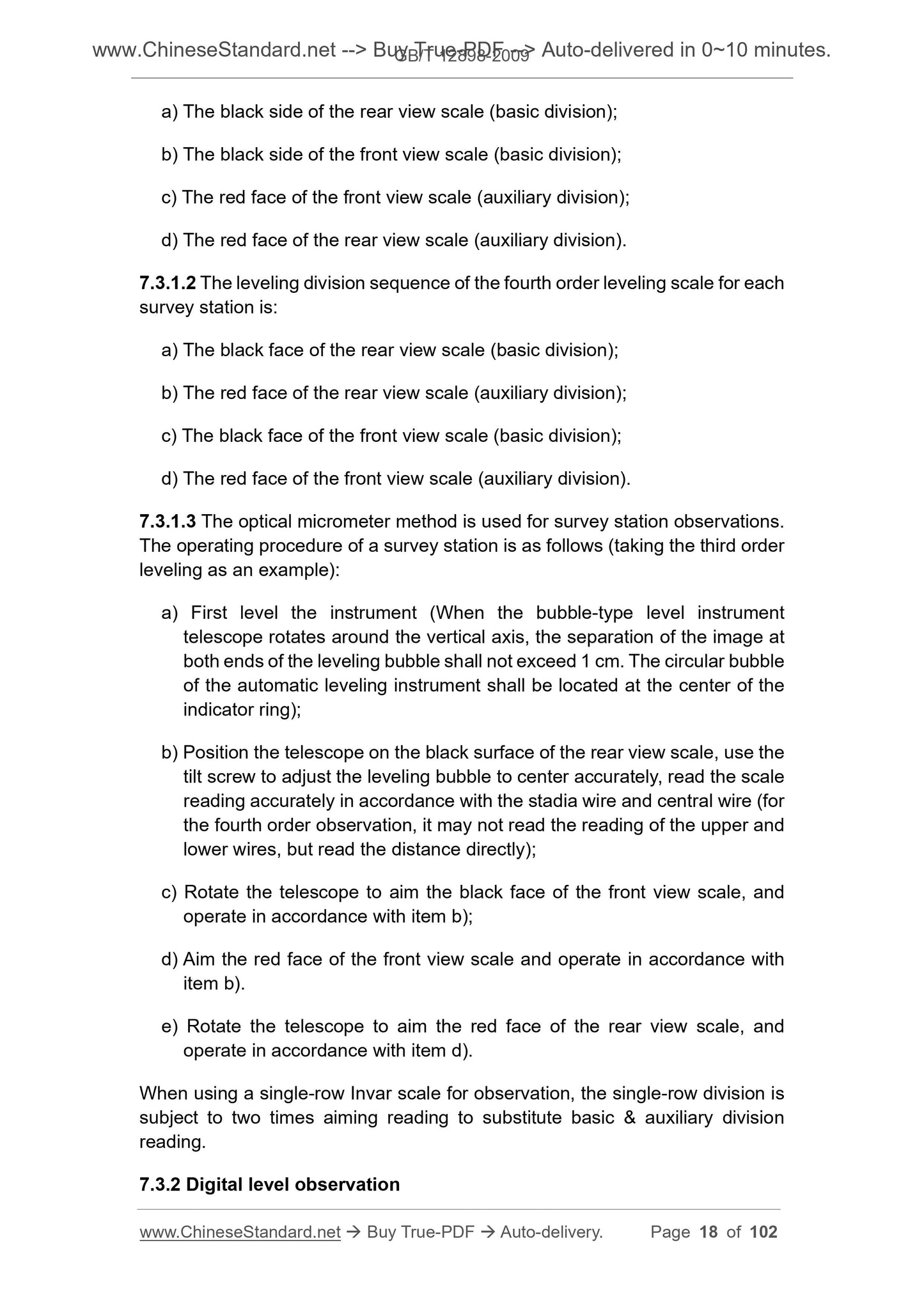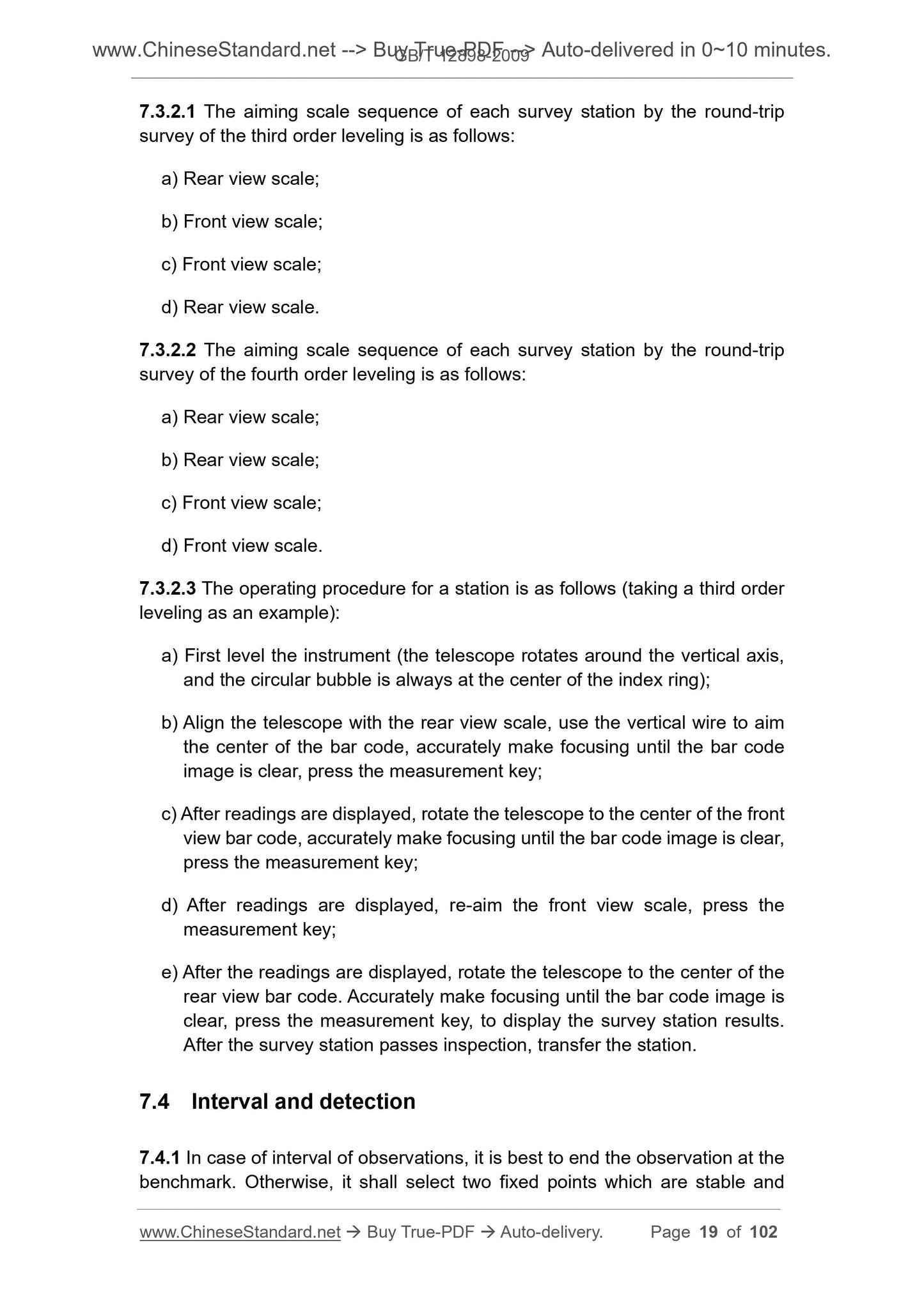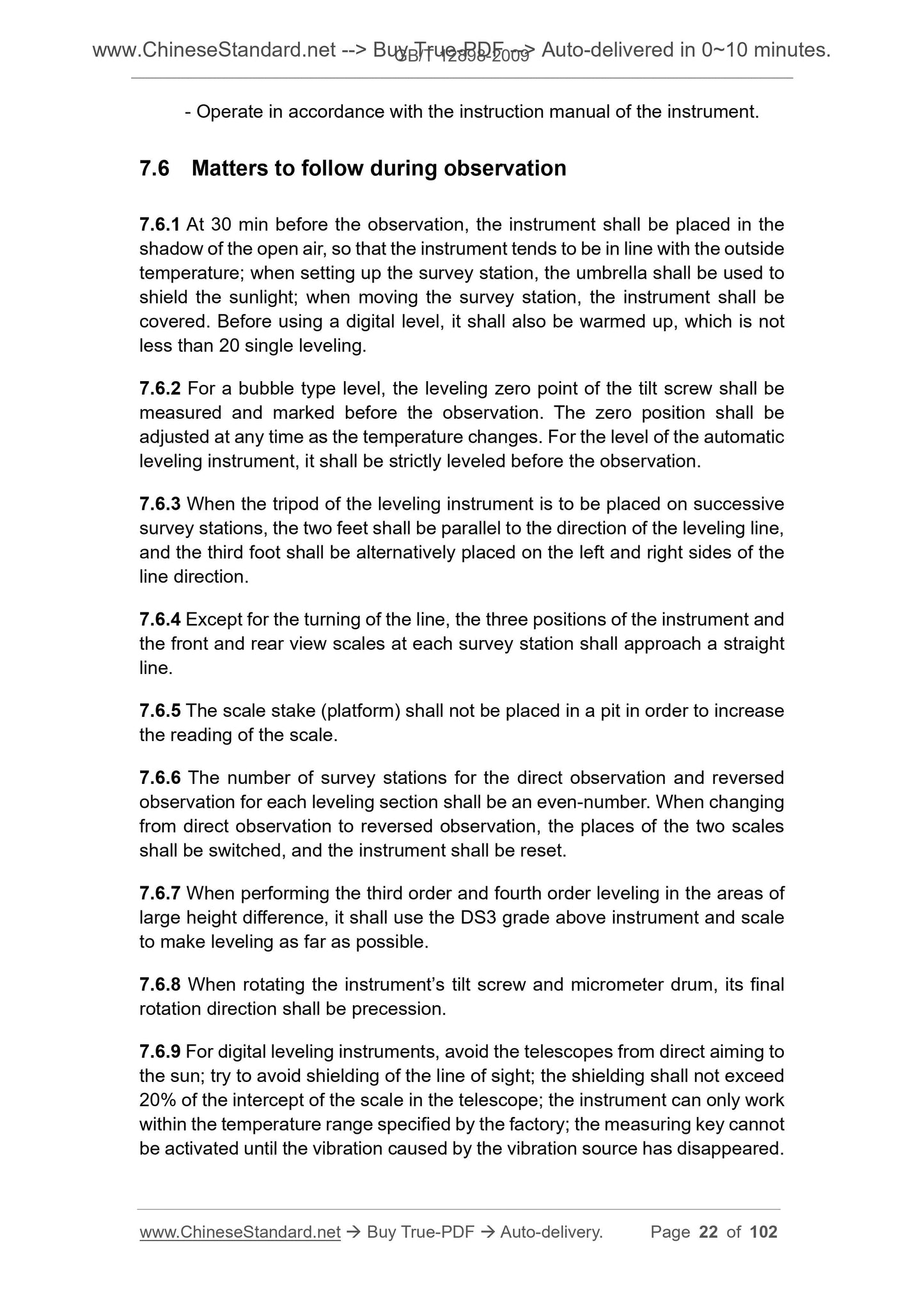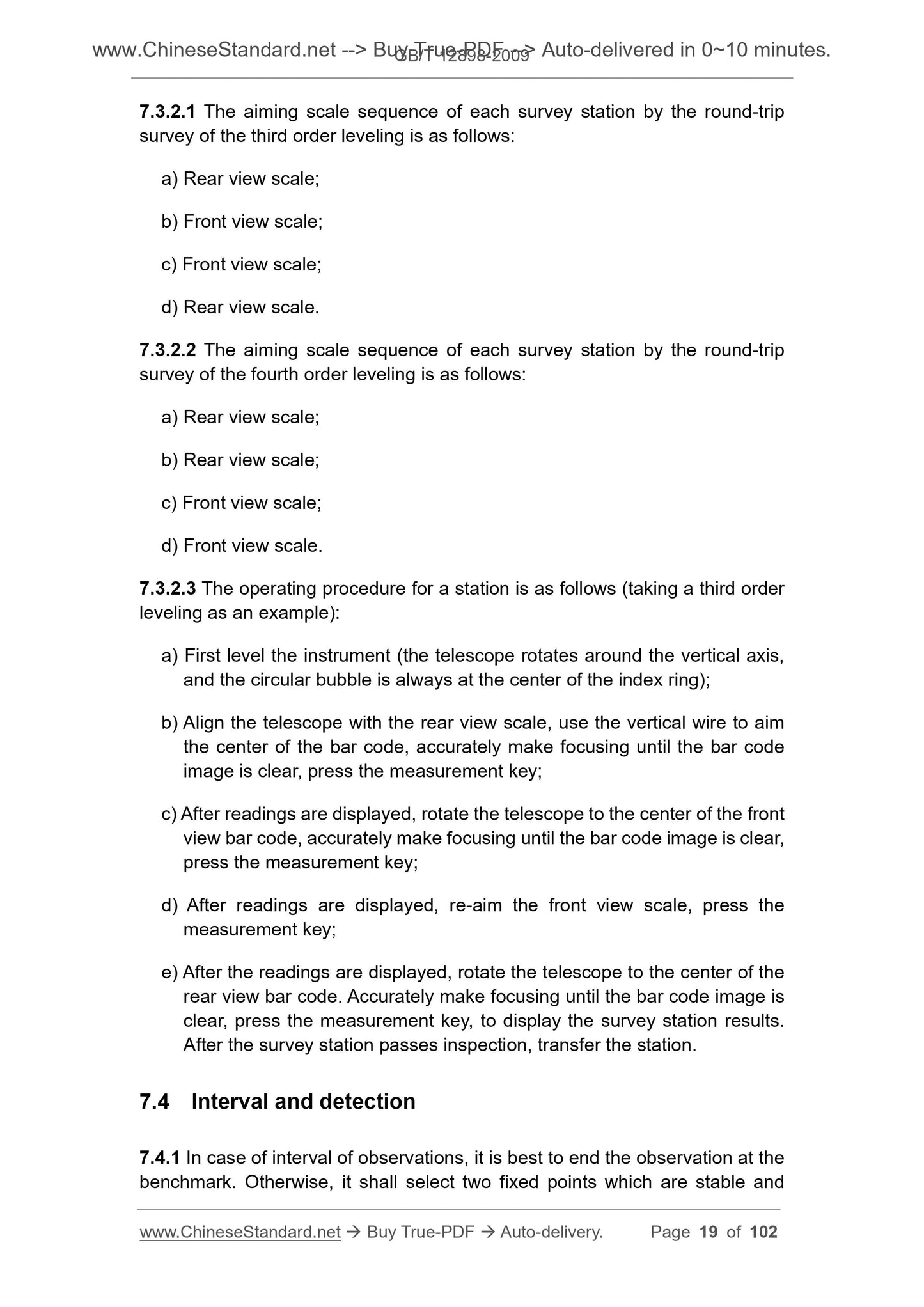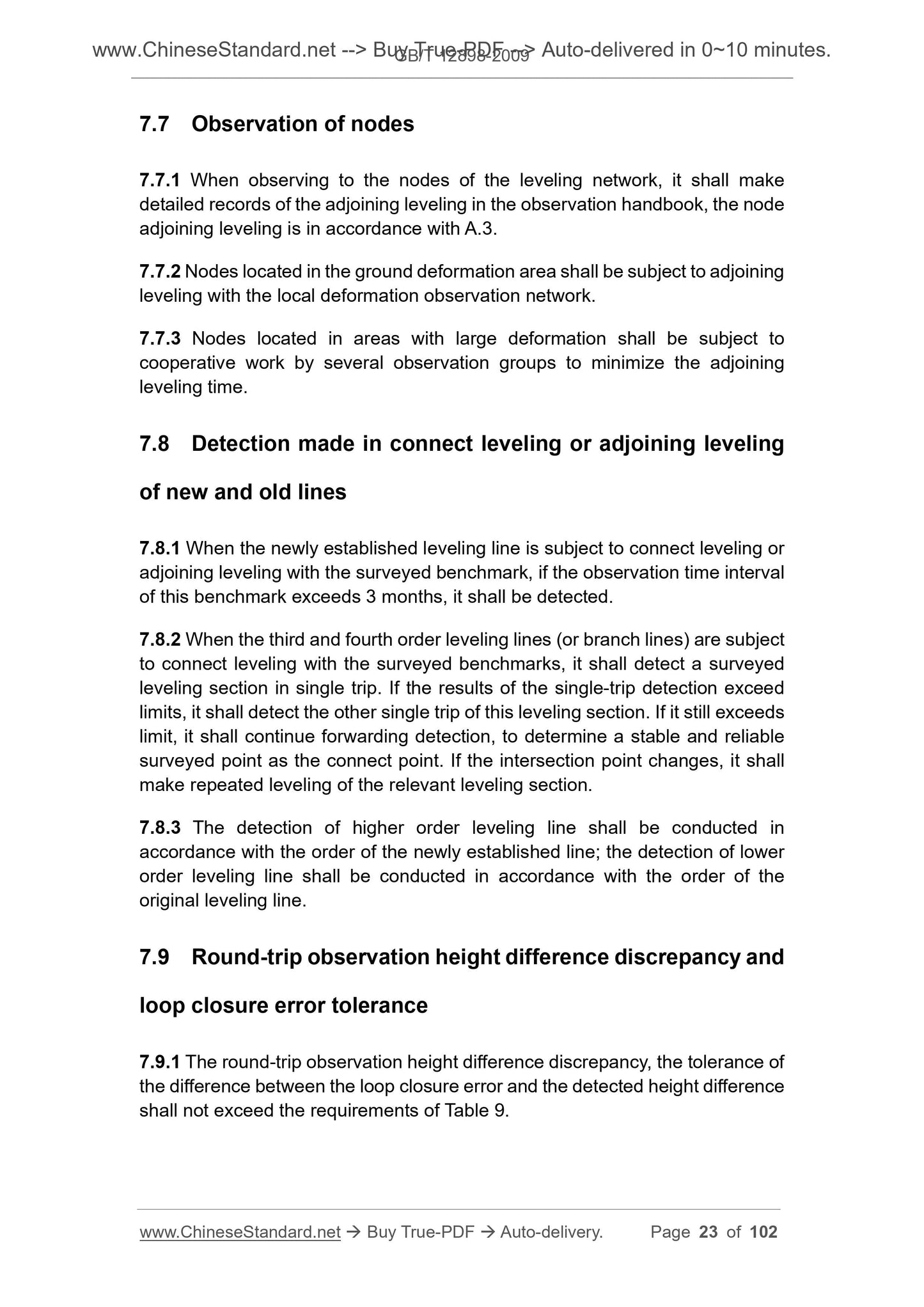1
/
of
12
www.ChineseStandard.us -- Field Test Asia Pte. Ltd.
GB/T 12898-2009 English PDF (GB/T12898-2009)
GB/T 12898-2009 English PDF (GB/T12898-2009)
Regular price
$500.00
Regular price
Sale price
$500.00
Unit price
/
per
Shipping calculated at checkout.
Couldn't load pickup availability
GB/T 12898-2009: Specifications for the third and fourth order leveling
Delivery: 9 seconds. Download (and Email) true-PDF + Invoice.Get Quotation: Click GB/T 12898-2009 (Self-service in 1-minute)
Newer / historical versions: GB/T 12898-2009
Preview True-PDF
Scope
This standard specifies the principles for the establishment of the third andfourth order leveling network, leveling methods, precision indicators and
technical requirements.
This standard applies to the deployment of the third and fourth order leveling
network.
Basic Data
| Standard ID | GB/T 12898-2009 (GB/T12898-2009) |
| Description (Translated English) | Specifications for the third and fourth order leveling |
| Sector / Industry | National Standard (Recommended) |
| Classification of Chinese Standard | A76 |
| Classification of International Standard | 07.040 |
| Word Count Estimation | 66,687 |
| Date of Issue | 2009-05-06 |
| Date of Implementation | 2009-10-01 |
| Older Standard (superseded by this standard) | GB 12898-1991 |
| Quoted Standard | GB/T 3161; GB/T 10156; GB/T 12897-2006; GB/T 16818; CH/T 1001; CH 1002; CH 1003; CH/T 1004; CH/T 2004; CH/T 2006; JJG 8; JJG 425; JJG 414; JJG 703; JJF 1118 |
| Regulation (derived from) | Announcement of Newly Approved National Standards No. 6, 2009 (No. 146 overall) |
| Issuing agency(ies) | General Administration of Quality Supervision, Inspection and Quarantine of the People's Republic of China, Standardization Administration of the People's Republic of China |
| Summary | This standard specifies the establishment of three, four leveling network layout principles, sampling methods, precision indicators and technical requirements. This standard applies to three, four, etc. measured level net cloth. |
Share
